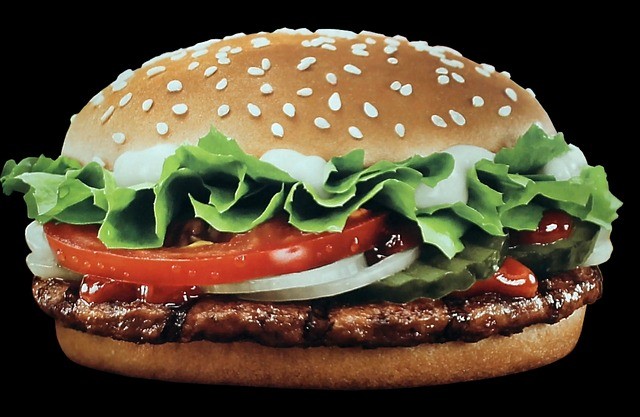Now learn on the effects it can give t our body if we eat McDonald’s hamburger. Check out the article we found over at Living Traditionally.
When talking about fast food giants, nothing can be bigger – and more infamous – than McDonald’s. Those two “golden arches” sign are so abundant and so well-known all over the world, that some toddlers can even recognize it even before they are able to speak full sentences.
In 2014, over 36,258 McDonald’s restaurants operate worldwide, serving over 69 million people every day. From its humble beginnings in the 1940s, the brand has now grown to be a multi-billion dollar company with an estimated value of over $85 billion.
And the fast food’s most popular menu item? The burgers.
According to The Fiscal Times, McDonald’s sells 75 burgers every second. That amounts to over 2.36 billion burgers per year – roughly the equivalent of eating a million cows.
For many people, nothing seems wrong with eating a McDonald’s hamburger. After all, it looks and tastes the same as other burger patties, and the added convenience makes it a much sought-after meal for busy people, those who are on-the-go, or those who simply do not have time to cook food at home.
But considering just how much burger patties are sold per day, haven’t you ever wondered just how McDonald’s hamburgers are made and, more importantly, what they’re made of?
Even more disturbing are the reports of McDonald’s burgers that do not decompose or rot for weeks, months, or even years after they’ve been cooked.
McDonald’s Hamburger Shows No Signs of Decomposition – Even After a Decade
There have been multiple stories going viral about McDonald’s hamburgers that show no signs of rotting or molding. One example is that of David Whipple, a man from Utah, who came forward in 2013, claiming that he had a McDonald’s hamburger that dates back to 1999 – but is yet to show any sign of decomposition.
Whipple initially bought the burger to keep for two weeks and show to his friends, but then forgot about it. Two years later, he found it in his coat pocket, with the original receipt, with no signs of rotting or mold. He decided to keep it to see how long it will disintegrate. According to ABC News website:
“‘The patty feels like concrete,’ Whipple said of the burger he has held onto for 14 years, first on purpose, then by accident, and then for a good laugh. Whipple… was living in Logan, Utah, and trying to lose weight when he first purchased the hamburger to prove to his friends that fast food was not real food.
‘It was nothing real scientific,’ Whipple said. ‘We were talking about enzymes and we knew what a good food like a banana would do but weren’t sure what a hamburger would do.’
Two weeks later, Whipple got his answer. The burger’s pickles and onion toppings had begun to shrink but the bun and hamburger ‘looked exactly the same,’ he said.
Whipple was invited to guest on the TV show The Doctors to talk about his experience. He said he uses the burger to encourage his grandkids to eat healthy and avoid fast food.
I’ve featured stories about these “everlasting McDonald’s burgers” on my site many years ago, like that of Manhattan artist Sally Davies’ “The Happy Meal Project,” where she photographed a McDonald’s Happy Meal every day for six months.
Karen Hanrahan, a wellness educator and nutrition consultant, also claimed to have kept a McDonald’s hamburger since 1996. It still looks as fresh as a newly bought one.
A Closer Look at a McDonald’s Hamburger Ingredients
According to McDonald’s website, the only ingredient in its hamburger is 100 percent pure USDA-Inspected beef, prepared with grill seasoning (salt and black pepper) and without fillers and extenders.
The fast food chain also refutes speculations that an “unknown” preservative is among their McDonald’s hamburger ingredients, and says that their burgers and buns do not decompose simply because they “become very dry in the cooking and toasting process.” According to a Business Insider article:
“…the patty loses water in the form of steam during the cooking process. The bun, of course, is made out of bread. Toasting it reduces the amount of moisture. This means that after preparation, the hamburger is fairly dry. When left out open in the room, there is further water loss as the humidity within most buildings is around 40%. So in the absence of moisture or high humidity, the hamburger simply dries out, rather than rot.”
Indeed, part of the embalmed-like feature of the meat patty can be because of its high-sodium content. Salt is a natural preservative that has been used throughout history.
But you have to admit that something that does not decompose, or even show signs of decomposing after days, months, or years seems very, very suspicious. After all, the hallmark of live food is that it wilts and decomposes – something that, apparently, does not occur in these burgers.
In 2014, McDonald’s attempted to clear its name by releasing a video, which starred former MythBusters co-host Grant Imahara and filmed in a Cargill facility in Fresno, California, that shows just how McDonald’s hamburger patties are made. It aims to debunk the myth that McDonald’s uses fillers, additives, and preservatives in their meat – showing instead large beef chunks on a conveyor belt going through a machine that forms them into patties.
They also asserted that they do not use pink slime in their meat. Pink slime is a sludge-like ingredient made of ground-up beef “trimmings” – various beef scraps and cow connective tissues – and ammonium hydroxide, which gives the mixture its pink hue. McDonald’s has admitted to using pink slime in their hamburgers before, but had discontinued it in 2011.
Here’s Why McDonald’s Bun Stays Mold-Free for Years
McDonald’s patty’s long life may be because of its sodium content, but what about the bun? Bread typically stays fresh for several days, but have you ever heard of one that stays mold-free for years? Yet that’s exactly what happened with the McDonald’s bun.
I believe that this is because McDonald’s bun is lightyears away from freshly baked bread you make at home – in fact, it is a “bread-like” concoction that bears no actual resemblance to natural bread (except for its appearance, obviously). Just take a look at the ingredients used in McDonald’s buns:
“Enriched Bleached Flour (Wheat Flour, Malted Barley Flour, Niacin, Reduced Iron, Thiamin Mononitrate, Riboflavin, Folic Acid), Water, High Fructose Corn Syrup, Yeast, Soybean Oil, Contains 2% or Less: Salt, Wheat Gluten, Leavening (Calcium Sulfate, Ammonium Sulfate), May Contain One or More Dough Conditioners (Sodium Stearoyl Lactylate, DATEM, Ascorbic Acid, Azodicarbonamide, Mono and Diglycerides, Monocalcium Phosphate, Enzymes, Calcium Peroxide), Calcium Propionate (Preservative).”
These ingredients should clearly offer clues as to why the burgers stay blemish-free and “fresh” for years. But what’s more alarming is that they can also open your eyes to the potential health ramifications you may experience if you eat a McDonald’s hamburger. For example, calcium sulfate, also known as plaster of Paris, can possibly cause digestive problems. Meanwhile, ammonium sulfate is known to cause nausea, vomiting, and diarrhea due to gastrointestinal irritation.
What Happens When You Eat an All-McDonald’s Diet?
Just recently, Tim Spector, a professor of genetic epidemiology at King’s College, London, wanted to learn what happens to your gut if you ate only McDonald’s for 10 straight days. His son, Tom, agreed to do the experiment and sent stool samples to different labs throughout the 10-day period.
The results were astounding. After just 10 days of eating fast food, his stool samples revealed that his gut microbes were “devastated” – about 40 percent of his bacteria species, amounting to over 1,400 different types, were lost. This severe loss of microbial diversity is a risk factor to obesity and diabetes.
Your gut is your second brain, and it is actually where 80 percent of your immune system lies. There are nearly 100 trillion bacteria, fungi, viruses, and other microorganisms, good and bad, that compose your body’s microflora. These organisms play a crucial role in your mental and physical health, and if you upset this delicate balance, you become predisposed to a wide range of health problems.
Eat Healthy, Homemade Foods and Watch Your Health Soar
I honestly believe that if you fail to plan, then you are planning to fail. Indeed, the secret to following a wholesome diet is learning to prepare your grocery list so you can plan your meals. Make it an essential part of your lifestyle. This would ideally involve scouting local farmers markets or food co-ops to buy in-season produce. Find a trustworthy source of grass-fed meats, raw dairy, and free-range chicken and eggs.
Next Article: Fast Food Restaurants Switch To Organic
Read full article: What Happens to Your Body When You Eat a McDonald’s Hamburger?







mary cox
Jan 16. 2016
if mc donnels is so bad,why does the fda not close them down